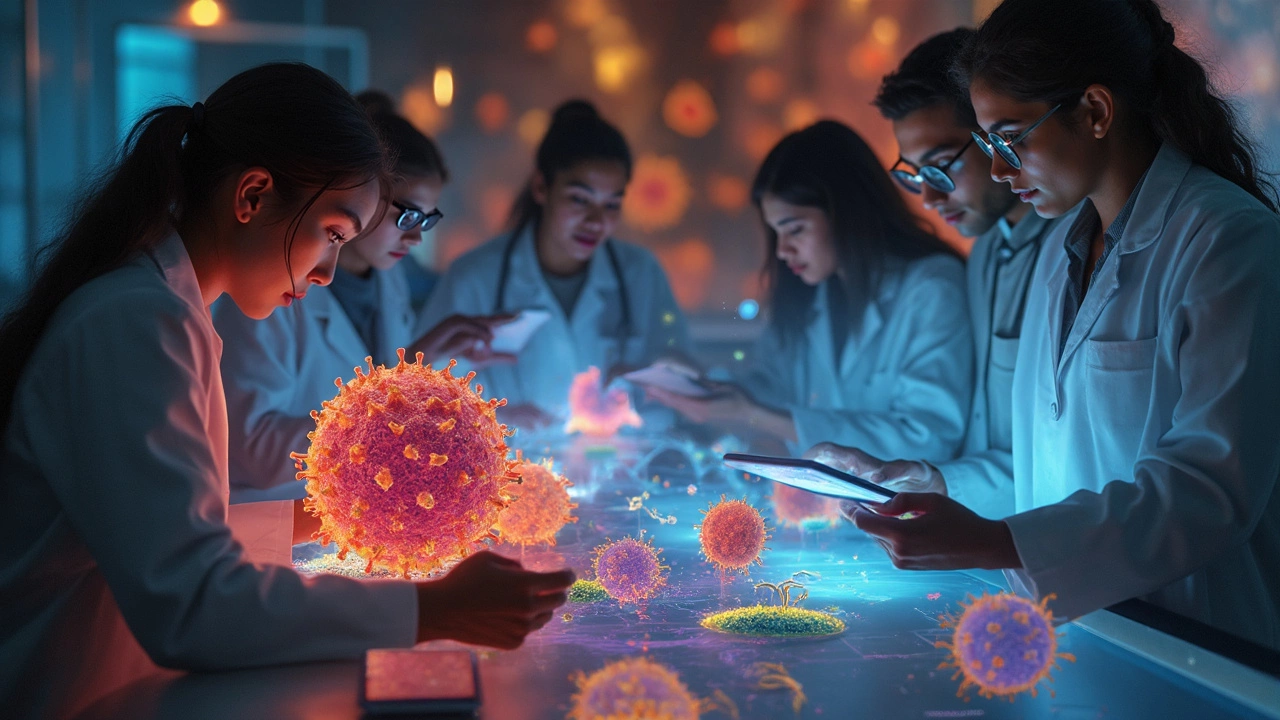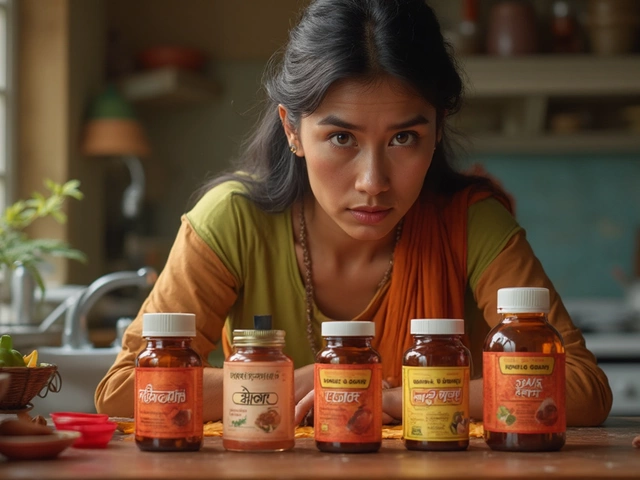Cancer cells aren’t just regular cells that went rogue. They dodge the normal rules, growing when they shouldn’t and refusing to die when they’re supposed to. But here’s the thing—our bodies actually have built-in systems designed to spot and squash these trouble-makers. That’s why, even if abnormal cells pop up, most of us won’t get cancer. So what trips up those rebel cells and keeps them in check?
There’s a whole mix of factors at play. Some are biological—like your immune system acting like an internal security guard. Others are from science—think targeted drugs that block cancer’s fuel lines. If you’re dealing with cancer, or just worried about it, understanding these blockers is key. Knowledge can help you be proactive with your health, steer the right conversations with your doctor, and spot new breakthroughs as they come up.
- How Cancer Cells Normally Grow Out of Control
- Natural Defenses: What the Body Does to Fight Cancer
- Modern Therapies and Smart Treatments
- Everyday Choices and Practical Tips
How Cancer Cells Normally Grow Out of Control
So, what really makes cancer cells such a menace? Basically, they stop listening to the normal "rules" that tell our cells when to grow or when to stop. Healthy cells have a pretty organized life—they grow, divide, do their job, and die off when they're supposed to. Cancer cells? They hit the gas pedal and never brake. This is what leads to tumor growth.
Experts at the American Cancer Society put it like this:
"Cancer starts when cells in a part of the body begin to grow out of control. Unlike normal cells, cancer cells don’t stop growing and dividing when they should."
Here’s what usually goes wrong:
- Ignoring stop signals: Cancer cells mutate so they ignore signals to stop dividing
- Escaping routine cell death: Normal cells self-destruct when damaged, but cancer cells avoid this, so they stick around too long
- Making their own growth signals: Some cancer cells make their own growth triggers, speeding up division even more
- Dodging the immune system: Healthy cells show damage and get cleared out, but cancer cells sometimes hide or trick immune cells
Most cancer treatment targets these exact weak spots. The more researchers understand about how cells get out of control, the better they are at making drugs that go straight for these broken processes.
| Normal Cell | Cancer Cell |
|---|---|
| Responds to stop/go signals | Ignores stop signals |
| Self-destructs when too damaged | Evades self-destruction |
| Respects boundaries | Invades surrounding tissues |
Knowing exactly how these cells go haywire is why we have so many options to slow or stop their spread today. If you’re learning about tumor growth, this stuff is the key to knowing what really needs to be stopped.
Natural Defenses: What the Body Does to Fight Cancer
Your body isn't sitting around letting cancer cells take over. It’s got some pretty tough defenses. The big player here is your immune system. Basically, it’s a built-in security team always on the lookout for trouble. When cells start acting weird—like multiplying too fast or ignoring signals to die—the immune system sends out special cells to handle it.
T-cells are a star here. They patrol your body and attack anything that looks off, including tumor growth. There’s also a group called natural killer cells. Just like their name, these guys destroy suspicious cells before they turn into real problems. Even healthy cells send signals (proteins called checkpoints) that tell immune cells, “I’m one of the good guys.” But abnormal, early cancer cells sometimes hide this signal, which is where things get tricky.
Besides the immune cells, your body has backup systems. For example, if a cell realizes it’s too damaged, it can self-destruct—a process called apoptosis. Think of it as a safety switch. There are also repair crews (enzymes fixing DNA mistakes) to make sure cells don’t go off track in the first place.
Here’s an interesting bit. According to a 2022 study published in "Nature," people make thousands of abnormal cells every day, but the vast majority get zapped by the immune system before they go anywhere. Only when these defenses miss something do tumor growth and real cancer become a problem.
- Healthy eating and enough sleep boost your immune system.
- Regular exercise also helps immune cells move faster and spot trouble sooner.
- Some vaccines, like the HPV vaccine, prevent viruses linked to cancer, cutting down the overall risk.
Bottom line: your body’s defenses are pretty impressive, but they aren’t perfect. That’s why catching problems early and giving your immune system a hand—like quitting smoking or getting regular checkups—can make a real difference.

Modern Therapies and Smart Treatments
If you hear the words "cancer treatment," you might picture the old-school standbys: chemo and radiation. These are still used, but doctors now have a growing toolbox full of advanced options that target cancer cells more precisely—and sometimes with fewer nasty side effects.
One key player in this new wave? Targeted therapy. Instead of blasting tons of healthy cells, these drugs home in on specific genes or proteins that help tumor growth. For example, breast cancers that make too much HER2 protein can be treated with drugs like trastuzumab, which blocks that signal and slows down cell growth. There’s also a medication called imatinib that's been a game-changer for some types of leukemia. It blocks a certain enzyme that the rogue cells need, basically cutting off their supply line.
Immunotherapy is another breakthrough. It gives the body's immune system a power-up. Some new drugs, called checkpoint inhibitors, unmask the cancer cells so immune cells can finally attack. The cancer isn’t invisible to the body anymore. That means some folks with cancers that were once almost untreatable—like advanced melanoma—have seen their illness shrink or stay under control for much longer than before.
Data from the National Cancer Institute shows immunotherapy treatments have doubled the five-year survival rates for certain types of cancer since 2015. Here’s a quick look:
| Cancer Type | 5-Year Survival Rate (2014) | 5-Year Survival Rate (2024 with Immunotherapy) |
|---|---|---|
| Metastatic Melanoma | 15% | 34% |
| Non-Small Cell Lung Cancer | 5% | 13% |
Let’s not forget about smart combos. Sometimes, doctors use two or more treatments at once: say, pairing targeted drugs with chemo or immunotherapy. This tag-team move can hit cancer cells from different sides, shrinking tumors faster or keeping them from coming back.
These therapies don’t work for every type of tumor, and not every patient gets the same benefit. That’s why doctors are pushing for "precision medicine"—tailoring treatment based on your own body’s unique setup. The point is, new cancer treatments are more about using brains, not just brute force. If you’re looking at your own options, ask what new tools are available. You might be surprised at what modern medicine can pull off now.
Everyday Choices and Practical Tips
No treatment plan is complete without considering what you do outside the hospital. While you can't "out-eat" or "out-run" cancer, what you do each day actually makes a difference in slowing down cancer cell growth and helping treatments work better. Here’s how to play your part in the fight against cancer cells.
If you want your immune system to act like a real internal guard against tumor growth, focus on the basics: eat, move, sleep, and manage stress. For example, studies agree that people who stick to a diet heavy on plant foods—think colorful veggies, fruits, nuts, and beans—have lower risk of certain cancers, including colon and breast types. It’s not magic: these foods are packed with fiber, vitamins, and antioxidants that your cells need to stay healthy. Stay away from processed meats as much as you can, since these have a strong link with cancer risk.
- Exercise counts: Staying active can cut your risk of several cancers by boosting your immune response and helping with weight control. Aim for 30 minutes of moderate movement most days—even brisk walking or cycling works.
- Skip the smokes: Not starting or quitting smoking is still the one change that can drop your risk of lung cancer and other types faster than almost anything else.
- Protect your skin: Use sunscreen and cover up when you’re outside. Skin cancer rates are still climbing, and simple changes go a long way.
- Cut back on alcohol: Even a drink a day can up the risk for several kinds of cancer. If you drink, do it rarely.
Need a quick look at what really works? Check out these science-backed numbers:
| Everyday Habit | Effect on Cancer Risk |
|---|---|
| At least 150 min/week physical activity | Up to 20% lower risk for colon & breast cancer |
| Non-smoker/quit smoking | 70-90% lower risk for lung cancer |
| 5+ servings veggies/fruits daily | Lower risk for GI and some other cancers |
| Regular sunscreen use | Lower skin cancer risk by up to 40% |
Don’t forget everyday check-ins. Going for regular screenings—like mammograms or colonoscopies—can pick up problems before they explode, often stopping cancer cell growth in its tracks. Even if you feel healthy, stay on top of these tests if you’re the right age or have a family history. And if you’re already dealing with cancer, ask your doctor about side effects of treatments. Sometimes, managing basic stuff like nausea or pain can help you stay strong enough for the next round of therapy.
The idea here isn’t to stress about living perfectly, but to make small, steady choices that keep your body in the fight. Tackling the basics gives your system the best shot at slowing or stopping tumor growth—sometimes before it gets out of control.





